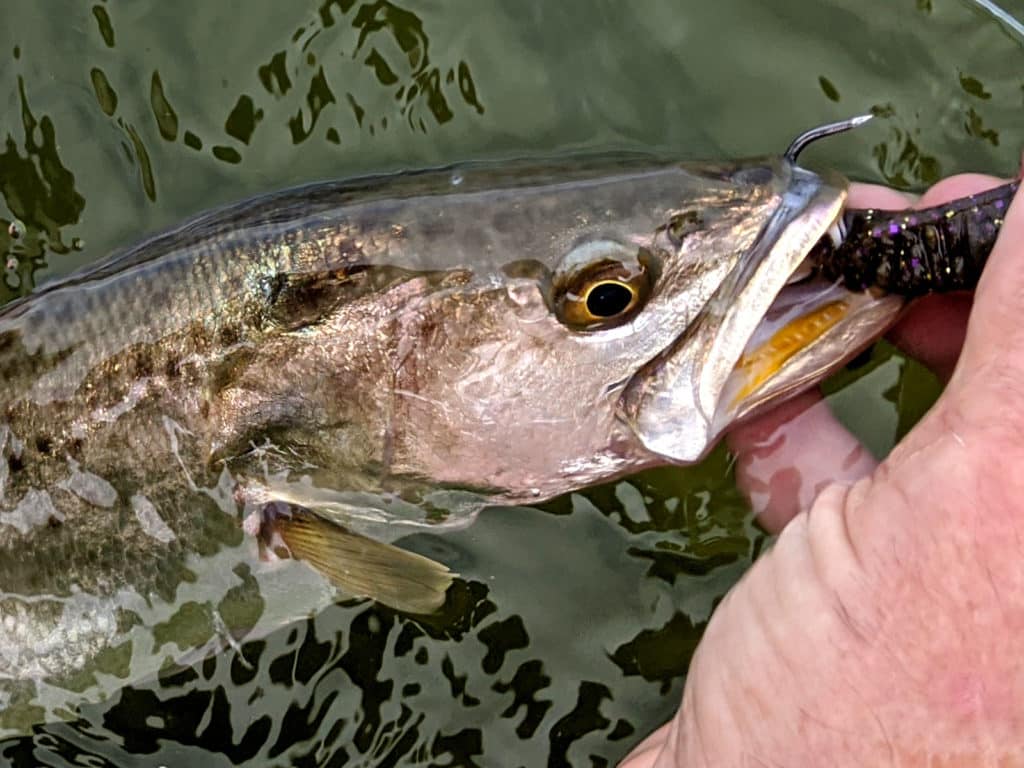
Most anglers agree that non-offset circle hooks are the best live-bait hook to use when catch-and-release fishing. Further, some fisheries mandate the use of circle hooks when targeting species such as striped bass, billfish or bottom fish. The design of a circle hook, with its hook point aimed in line toward the hook shank, allows an angler to reel tight to a fish rather than use a traditional “jaw-jacking” hookset.
Non-offset (also called inline) circle hooks are great at avoiding gut-hooking, making it much easier for anglers to unhook fish for healthy releases. (Keep in mind that offset circle hooks have a hook point that does not aim directly at the hook shank, but rather slightly to a side, leading to higher chances of gut-hooking.)
Bite-Shortened Fishing Hooks
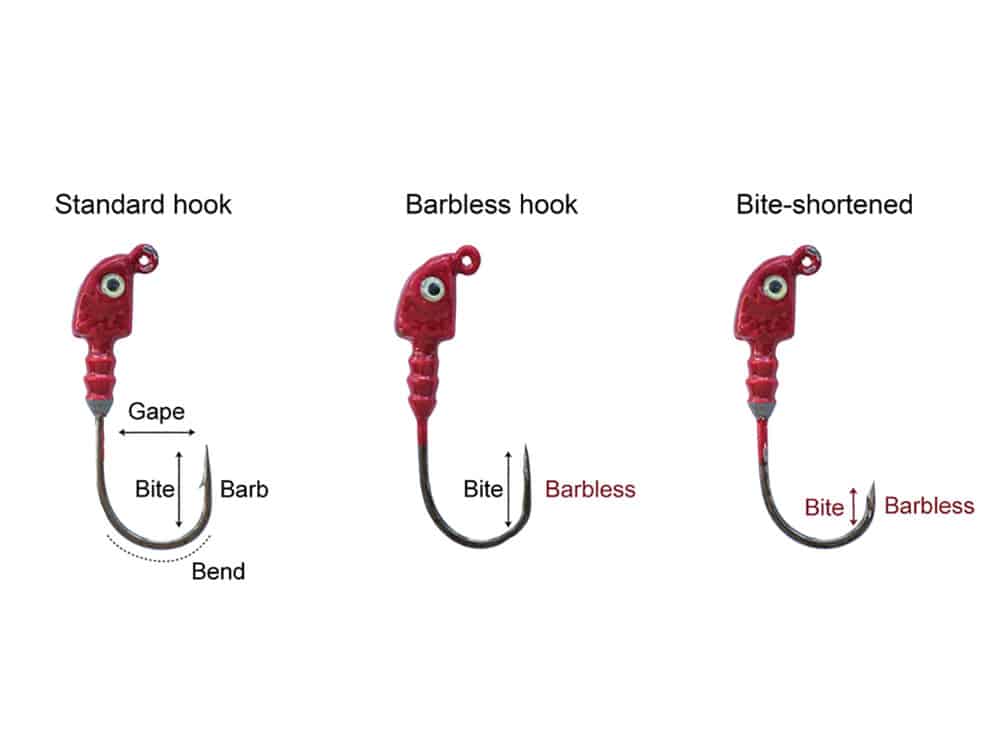
With circle hooks the standard in conservation, researchers from the University of Florida IFAS Nature Coast Biological Station (UF/IFAS NCBS) modified an existing inshore jighead to see if they could create hook that allowed anglers to land and release fish without ever touching them. The new hook, which researchers called a “bite-shortened hook,” takes release fishing to a whole new level.
“The self-releasing hook modification was originally developed on flies being cast to bonefish in the central Pacific where hooked, fought, landed, and released fish were highly vulnerable to mortality from the shark population — it was essentially a shark feeding on released fish operation,” said Andrew Gude, of the U.S. Fish & Wildlife Service, National Wildlife Refuge System. “Rather than ban fishing completely, it was recommended that a self-releasing hook be prescribed to continue to allow some fishing.”
To make the hook, researchers cut in half the length of the bite on their jigheads and then re-sharpened to create a hook point.
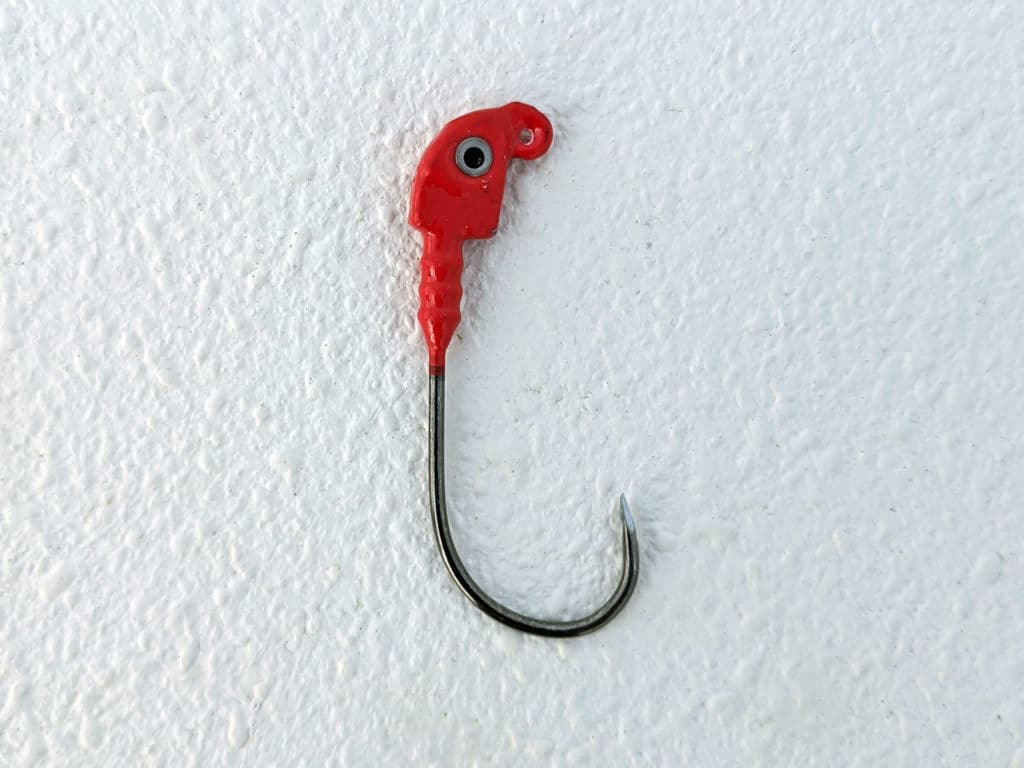
One of the researchers, Dr. Holden Harris, a post-doctoral research associate with UF/IFAS NCBS, presented their findings at the 2022 Bonefish & Tarpon Trust International Science Symposium.
“Best fishing practices can considerably improve the outcome of released fish by minimizing injury with non-offset hooks, not contacting fish with dry surfaces, and limiting fish handling and air exposure,” said Holden. “However, the process of releasing fish can still lead to discard mortality. Handling fish can cause internal damage, disrupt the epidermal mucus membrane, and increase infection and risk of predation. This can make some sensitive fisheries — even if they’re catch-and-release — unsustainable if there’s a lot of fishing effort.”
The study used three types of jigheads — standard J-hook, barbless J-hook and bite-shortened J-hook — to catch spotted seatrout on the seagrass flats of Cedar Key, Florida. The researchers caught and released 75 speckled trout (Cynoscion nebulosus) with each hook type.
Results of the Fishing Study
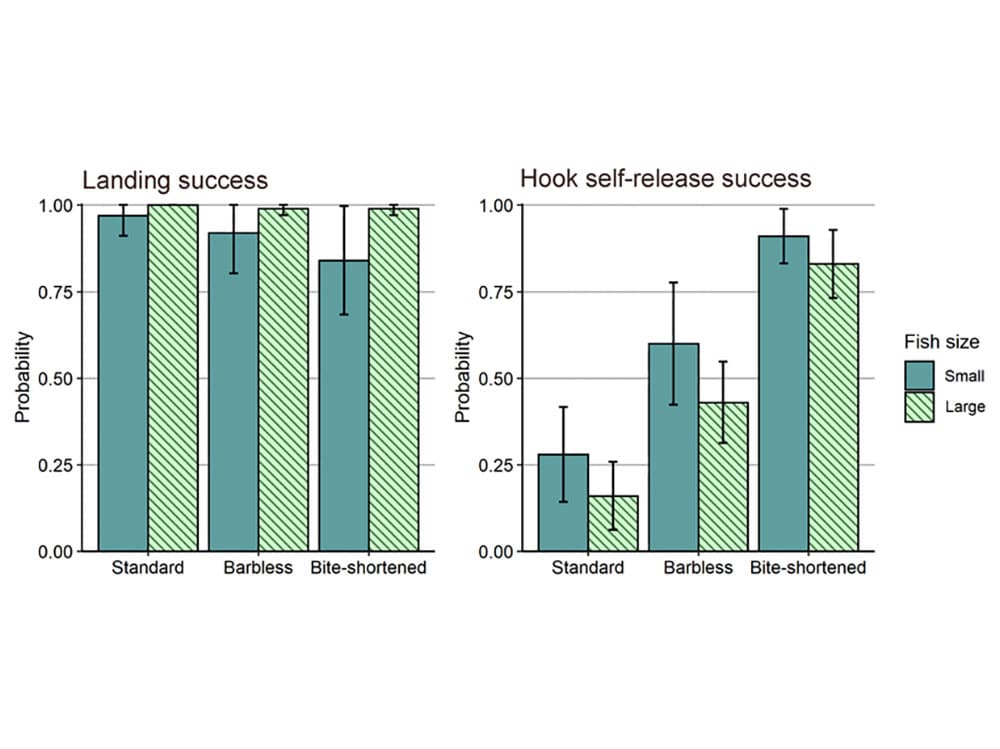
The researchers considered a landing success if they were able to reel a seatrout close enough to the boat to be within a net’s reach, or about 1 meter from the gunwale. Then, a successful “self-release” was when a seatrout threw the hook boat side, within 10 seconds.
“These self-releases were done without ever touching the fish,” Holden explained. “We gave slack in the line and let the seatrout jump, thrash or headshake, throw the hook, and swim away without any handling by hands or nets or having to be removed from the water.”
Holden and his team used logistic models to assess the differences in landing success and self-release success by hook type and fish size. Seatrout were classified as “small” or “large” — either longer or shorter than about 13 inches.
“The average landing success was greater than 90 percent with all three hook types,” said Holden. “Bite-shortened hooks were able to successfully self-release 87 percent of landed fish, compared to success rates of 47 percent using barbless hooks and 20 percent using standard hooks. Small fish had higher rates of both unintentional release during reel-in and intentional handling-free release boat side. Our hypothesis why this could be is that larger individuals have larger gape sizes and so may be hooked deeper. This is supported literature which has shown that larger fish have higher incidents of deep and traumatic hooking for Northern Pike, Mediterranean coastal fishes, and Gulf of Mexico reef fishes.”
The bite-shortened hook self-released almost 90 percent of the seatrout it caught. The numbers speak for themselves— the modified jighead flat out worked as intended.
Will Anglers Use These Hooks?
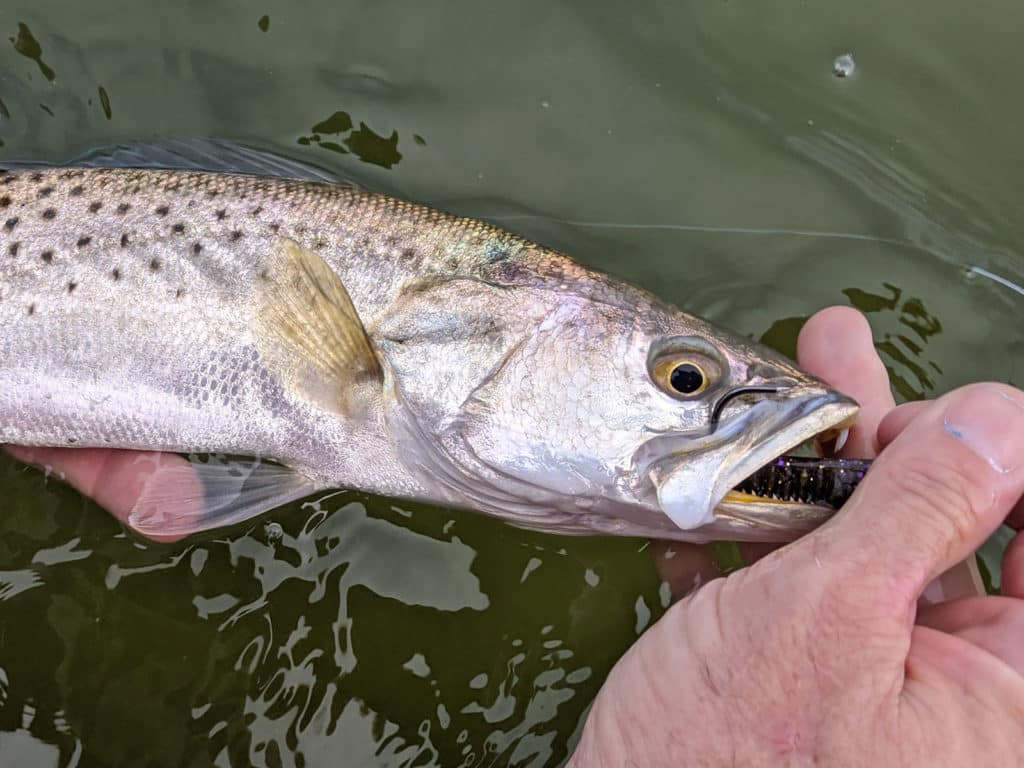
Researchers aren’t exactly sure how the hook would be utilized by recreational anglers.
- Would anglers buy these hooks if they were manufactured and sold?
- In what instances would anglers rather “shake off’ their fish instead of landing and releasing them?
- Do the quick releases hurt the fishing experience?
- Do anglers like to handle a fish before release? Will they miss touching a fish?
- Would anglers be okay with not taking pictures of their catches?
Holden believes more testing on bite-shortened hooks with other types of lures, fish species and skill level of anglers are warranted. A foreseeable opportunity he does see for bite-shortened hooks — fishing in sensitive fisheries, such as no-take aquatic reserves. Because bite-shortened hooks have minimal discard effects, these areas closed off from fishing pressure could potentially open up to recreational anglers if fishing methods used were only those that produced little-to-no post-release mortality.
“With further study, innovative fishing gears like self-releasing hooks could provide novel management approaches and fishing best practices to optimize the tradeoffs between allowing fishing opportunities and conserving fish populations,” he said.









